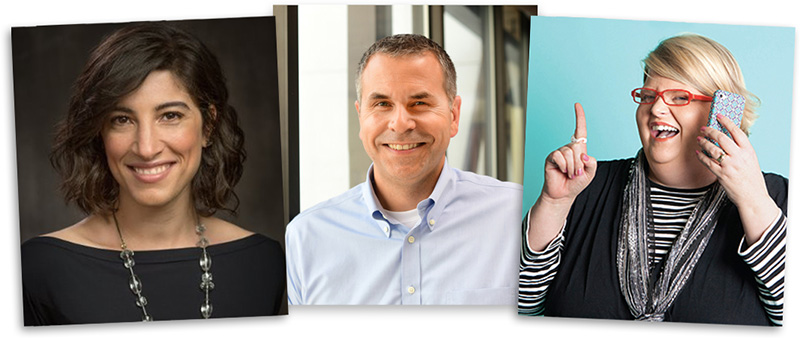The Importance of Critical Thinking in the Age of Fake News
Experts shared advice on how to teach students to analyze information during an SLJ/ISTE webcast on critical thinking in the age of fake news, misinformation, and disinformation.
 |
Renee DiResta, Peter Adams, and Jennifer LaGarde |
In today’s complex media environment, students must learn how to identify the source of information, verify it, and analyze how it was designed to make them feel, according to news and information literacy experts.
SLJ and ISTE recently hosted a webcast, Critical Thinking in the Age of Fake News, with panelists Peter Adams, senior vice president of education at the News Literacy Project, Renee DiResta, research manager at Stanford University Internet Observatory, and Jennifer LaGarde, an educator and the co-author of Fact vs. Fiction: Critical Thinking Skills in the Age of Fake News. SLJ ’s editor, news and features, Sarah Bayliss moderated.
“One of the main issues is how do you think critically when there is such a myriad of sources,” DiRosa said. “It’s so hard to even know where your information is coming from.”
DiResta explained the differences between four important terms that are used in academia and research: fake news, misinformation, disinformation, and propaganda.
- Fake news is a term that used to refer to information that was demonstrably false. The term has fallen out of favor since it has become so politicized and is often used to dismiss news that someone just doesn’t like, DiResta said.
- Misinformation refers to information that is inadvertently wrong and not intended to misinform people.
- Disinformation refers to information or the distribution of information that is deliberately incorrect or deceptive and intended to spread a false message.
- Propaganda refers to information with an agenda. It is intended to persuade, and while it is not always false, it contains a lot of cheerleading or an unnecessarily positive spin.
There is a wide range of people now active in the creation and dissemination of information, DiResta said. Disinformation and propaganda are no longer produced only by state government or state media. Now it can also come from terrorist organizations, domestic ideologues, spammers, or people who are economically motivated.
Adams noted that the coronavirus pandemic and recent protests to “reopen” the country have sparked a lot of misinformation. For example, some people have spread false medical information and doctored photos to support conspiratorial claims, he said.
“It’s easy for people to believe that sharing this kind of information can’t hurt,” Adams said. “But it can give them a false confidence that they might not need to take the kinds of precautions that they otherwise would.”
Adams shared four key skills educators can teach students to help them combat misinformation.
- Lateral reading. Verifying information as you read it. This can be done by leaving the site and looking at other sites to make sure the original source is reliable and authentic.
- Critical observation. Using critical thinking to look more carefully at images and think about where those images were taken.
- Reverse image search. A digital investigative technique used to find the original source of photographs. Google has specific tools for this, and other sites such as TinEye and Yandex, also help users with these searches.
- Geolocation. Verifying the location of online information. It involves using Google Street View and other sites to confirm the location of an image.
LaGarde said educators need to start making the connection between news and information literacy and social-emotional learning.
“We have to teach kids that they need to think about how the news and information makes them feel,” she said. “And we need to provide some strategies for navigating that emotional response.”
She also noted that many schools teach kids about news literacy on desktops and laptops, while most people, including students, now access information through their phones. She advised listeners to teach students how to parse information for credibility on phones.
LaGarde also stressed the importance of getting students to think about what motivates someone to create and share information, and she noted that many kids are already creating content on YouTube and Instagram.
“We can harness their interest in creating content to help them think about the choices that content creators make when creating information that is suspect or false,” LaGarde said. “We can help kids get inside the minds of people who create news and information.”
Melanie Kletter is an educator and freelance writer and editor.
RELATED
The job outlook in 2030: Librarians will be in demand
The job outlook in 2030: Librarians will be in demand
ALREADY A SUBSCRIBER? LOG IN
We are currently offering this content for free. Sign up now to activate your personal profile, where you can save articles for future viewing






Add Comment :-
Comment Policy:
Comment should not be empty !!!